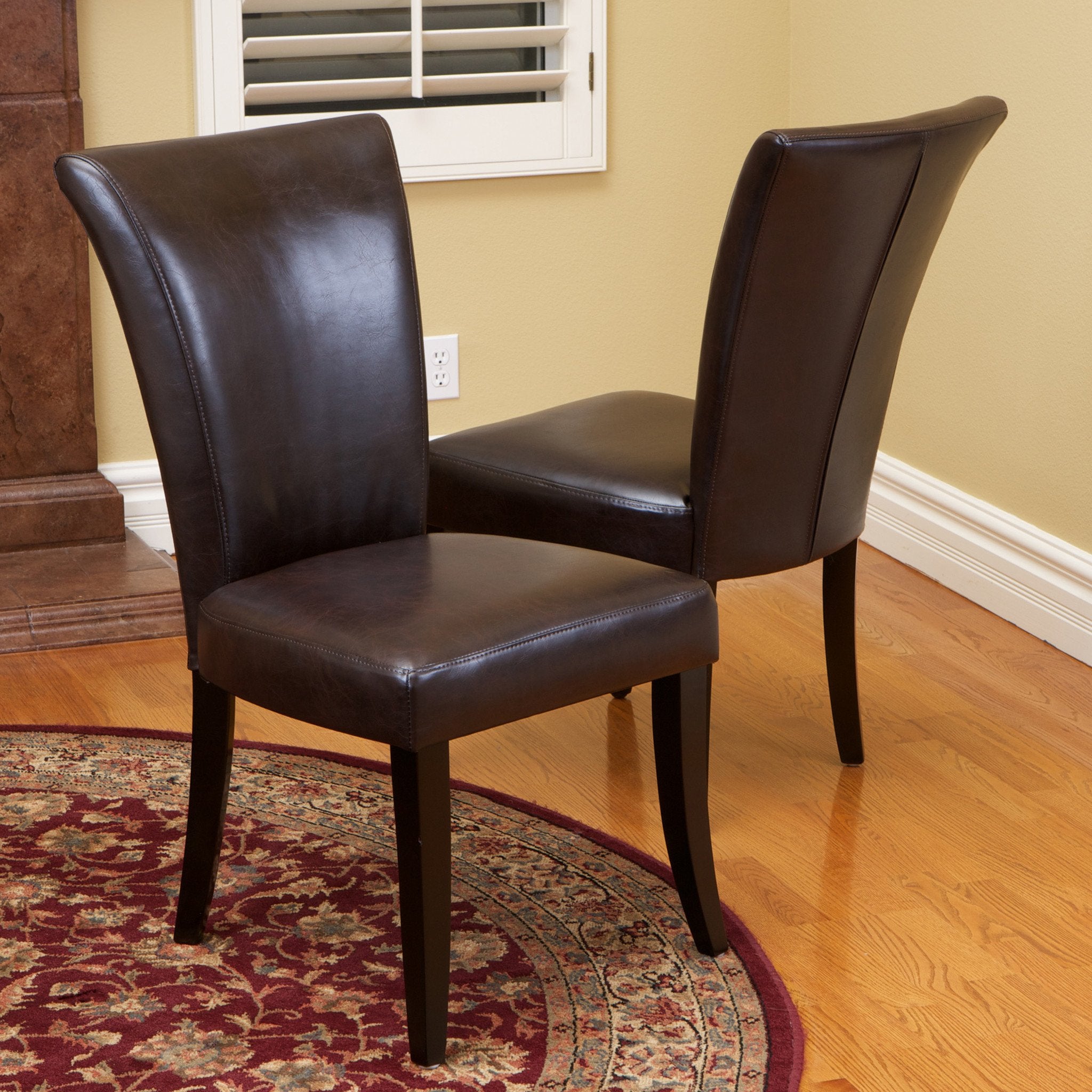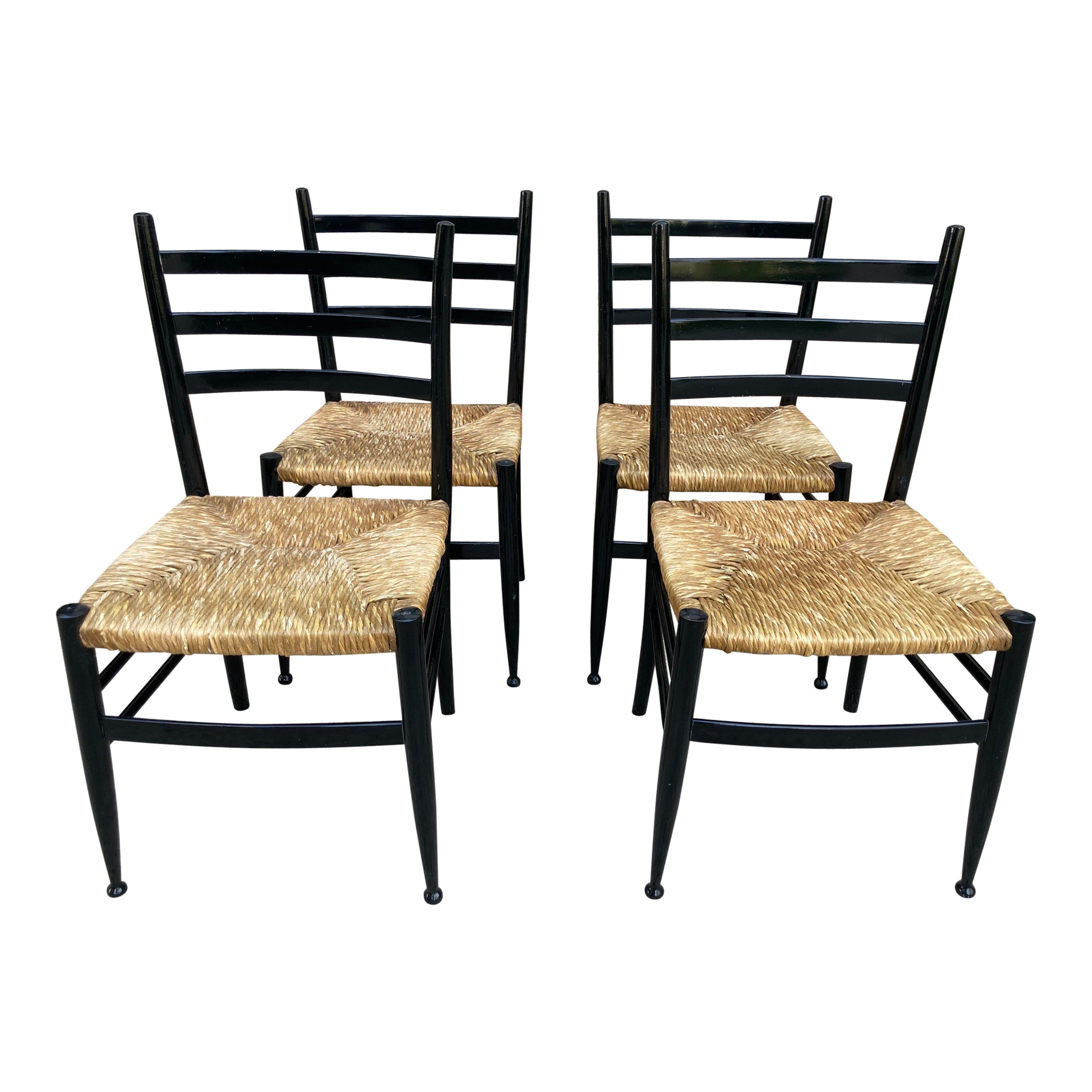Manufacturing & Materials of Leather Strap Dining Chairs

The production of leather strap dining chairs involves a complex interplay of material selection, manufacturing techniques, and assembly processes. Understanding these aspects is crucial for appreciating the chair’s durability, aesthetic appeal, and environmental impact. This section details the manufacturing process, explores common wood frame types, and examines the sustainability considerations involved.
Manufacturing Process of Leather Strap Dining Chairs
The creation of a leather strap dining chair is a multi-stage process, from raw material sourcing to the finished product. The following table Artikels the key steps, materials, and techniques involved.
| Stage | Materials | Techniques | Description |
|---|---|---|---|
| Frame Construction | Hardwood lumber (e.g., oak, beech, walnut), wood glue, screws, dowels | Woodworking machinery (planers, jointers, shapers), hand tools (chisels, saws), joinery techniques (mortise and tenon, dowel joints) | Individual frame components are cut, shaped, and assembled using precise joinery methods to ensure strength and stability. The type of wood significantly influences the chair’s weight, durability, and aesthetic. |
| Leather Strap Preparation | Full-grain or top-grain leather hides, leather dyes, leather conditioners | Leather cutting machines, hand stitching, edge finishing techniques | Leather hides are cut to the required dimensions for the chair straps. The straps are then dyed, conditioned, and potentially embossed for aesthetic enhancement. |
| Strap Attachment | Screws, rivets, leather washers, specialized tools | Precise measurement and drilling, careful strap placement to ensure even tension and comfort | The leather straps are securely attached to the wooden frame, often using screws or rivets. Washers are used to protect the leather from damage and ensure a clean finish. |
| Finishing | Wood stain, varnish, polyurethane, leather sealant | Spraying, brushing, sanding | The wooden frame is finished with stain, varnish, or polyurethane to protect the wood and enhance its appearance. Leather straps may also receive a sealant to protect them from wear and tear. |
Wood Frame Materials and Their Influence
The choice of wood significantly impacts the chair’s durability, aesthetic, and cost. Different wood species offer varying degrees of strength, grain patterns, and color variations.
Leather strap dining chair – The following list details common wood types and their suitability for strap chairs:
- Oak: Known for its strength, durability, and beautiful grain patterns. Excellent choice for high-traffic areas. It’s relatively heavy.
- Beech: A strong and hard wood with a fine, even grain. It’s less expensive than oak but still offers good durability. It can be readily stained to various colors.
- Walnut: A luxurious hardwood with rich, dark coloring and attractive grain. Offers excellent strength and durability, but is more expensive.
- Maple: A hard, strong wood with a smooth, fine grain. It is lighter than oak and beech and takes stains well. It’s a good choice for a more contemporary look.
Sustainability Aspects of Leather Strap Chair Production, Leather strap dining chair
Sustainable practices are increasingly important in furniture manufacturing. Several factors influence the environmental impact of leather strap chair production.
These include:
- Sourcing of Leather: Sustainable leather sourcing involves choosing hides from tanneries committed to responsible environmental practices, minimizing water and chemical usage, and ensuring animal welfare. Consideration should be given to the origin and the tanning methods used.
- Sourcing of Wood: Using sustainably harvested wood from certified forests ensures responsible forest management and minimizes deforestation. Choosing hardwoods that grow quickly and require less resource input can further reduce environmental impact.
- Manufacturing Processes: Minimizing waste during the manufacturing process, employing energy-efficient machinery, and using water-based finishes are crucial for reducing the environmental footprint. Recycling of wood scraps and leather offcuts is also essential.
- Potential Environmental Impacts: The tanning process can generate significant wastewater pollution if not properly managed. Deforestation associated with unsustainable wood harvesting is a major concern. The disposal of the chair at the end of its life cycle also needs consideration, with options like recycling or repurposing being important aspects of responsible production.
Care & Maintenance of Leather Strap Dining Chairs

Proper care and maintenance are crucial for extending the lifespan and preserving the aesthetic appeal of leather strap dining chairs. Regular cleaning and preventative measures will protect the leather from damage and maintain the structural integrity of the chair. Different leather types require slightly different care approaches, and understanding these nuances is key to achieving optimal results.
Cleaning and Maintaining Leather Strap Dining Chairs
A systematic approach to cleaning is vital for preserving the quality of your leather strap dining chairs. The following steps provide a comprehensive guide, adaptable to various leather types.
- Dusting: Begin by regularly dusting the chairs with a soft, dry cloth or a feather duster. This removes loose dirt and prevents the accumulation of grime that can damage the leather over time. Focus on crevices and seams where dust tends to accumulate.
- Spot Cleaning: Address spills and stains immediately. Blot (do not rub) the affected area with a clean, damp cloth. For tougher stains, use a mild soap solution (e.g., saddle soap diluted with water) applied sparingly with a soft sponge. Always test any cleaning solution on an inconspicuous area first to check for discoloration.
- Leather Conditioner Application: Once or twice a year, apply a high-quality leather conditioner. This replenishes the leather’s natural oils, preventing dryness, cracking, and discoloration. Follow the conditioner’s instructions carefully; applying too much can lead to a greasy residue.
- Drying: After cleaning, allow the chairs to air dry naturally. Avoid using direct heat or sunlight, which can cause the leather to crack or fade. Gentle air circulation is ideal.
- Full Cleaning (Periodic): For a deeper clean, consider using a specialized leather cleaner formulated for the specific type of leather (e.g., full-grain, top-grain, etc.). Always follow the manufacturer’s instructions precisely.
Preventing Common Issues
Proactive measures significantly reduce the risk of damage to both the leather and the frame of your dining chairs. The following preventative strategies are highly recommended.
- Protection from Sunlight: Direct sunlight can cause fading and cracking. Keep your chairs out of direct sunlight as much as possible. Consider using curtains or blinds to filter sunlight.
- Avoid Harsh Chemicals: Never use harsh chemicals, abrasive cleaners, or solvents on the leather. These can damage the leather’s finish and cause irreversible discoloration.
- Regular Inspection: Regularly inspect your chairs for any signs of wear and tear, such as scratches or loose straps. Addressing minor issues promptly can prevent them from becoming major problems.
- Proper Use: Avoid placing hot objects directly on the leather, as this can cause burns or discoloration. Similarly, avoid sharp objects that could scratch the surface.
- Frame Maintenance: Regularly inspect the wooden frame for any signs of damage or loosening. Tighten any loose screws or bolts as needed. For wood, consider using a wood polish to maintain its finish.
Infographic Description
The infographic would consist of three panels. The first panel depicts a step-by-step guide to cleaning, showing images representing dusting with a soft cloth, spot cleaning with a damp cloth, and conditioning with a leather conditioner bottle. Arrows connect the images, indicating the sequential steps. The second panel showcases preventative measures, using icons to represent protecting from sunlight (sun icon with a cross), avoiding harsh chemicals (a spray bottle with a cross), and regular inspection (a magnifying glass). The third panel visually summarizes the proper cleaning agents, showing icons for a soft cloth, damp cloth, and leather conditioner bottle, each labeled with its specific use. A color-coded system would be used to differentiate between different leather types, for example, full-grain leather might be represented by a specific color while top-grain leather uses another color.
